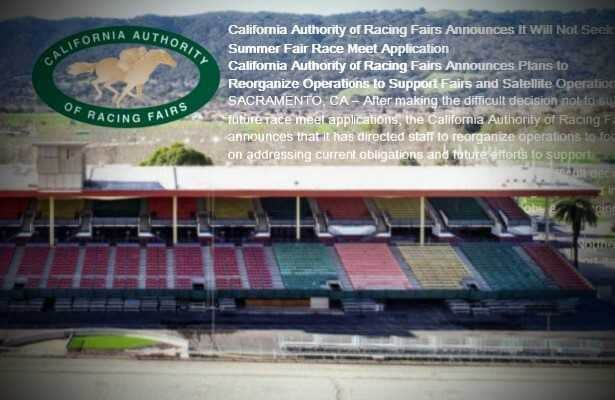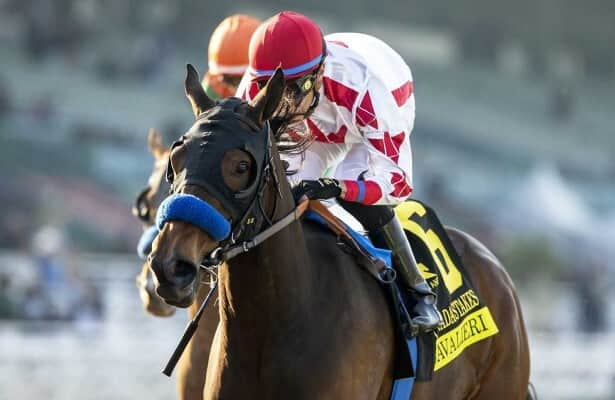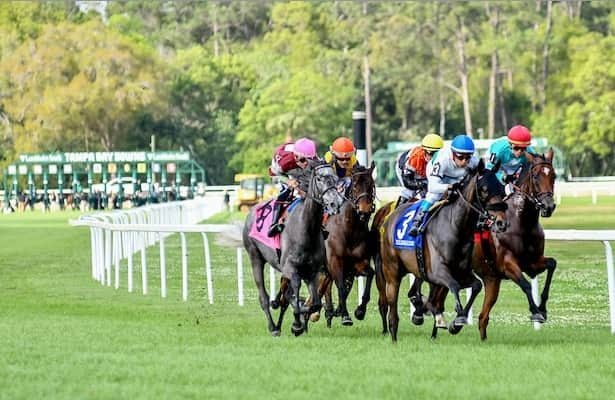NorCal racing is doomed after fair authority votes no for 2025

After 167 years, Northern California racing suffered what appeared to be a
fatal blow Tuesday when the California Authority of Racing Fairs said it would
not go forward with its traditional summer and early fall meets.
The announcement came only hours after CARF directors voted unanimously
not to apply to the California Horse Racing Board for the usual dates from June
to October for Pleasanton, Sacramento, Ferndale and Fresno.
Flashback: Reported deficits doom NorCal racing.
“This difficult decision was based upon an assessment of
financial challenges incurred in the Golden State Racing (fall) race meet as
well as current obstacles facing the horse-racing industry,” CARF said in a
news release Tuesday.
The vote came after an administrative whirlwind to start the
new year. It began Jan. 16, when chairperson Jerome Hoban, the CEO of the
Alameda County fair in Pleasanton, resigned from the CARF board. At a special
meeting last Tuesday, San Mateo County fair manager Dana Stoehr was voted in as
the new chairperson and Dan Jacobs of the Antelope Valley fair as the vice
chairperson.
One week later, Stoehr presided over what may have been the death
knell sounding for Northern California racing.
CARF still intends to maintain simulcast wagering at its 12
locations, with eight in the north and four in the south.
“While this marks a difficult and challenging moment for the
Northern California live-racing community, CARF will continue to support its
satellite wagering members and explore all possible avenues to support the
California horse-racing industry,” Tuesday’s statement said.
The fall of the dominos was accelerated in June when the
Stronach Group permanently closed Golden Gate Fields, the north state’s Albany-Berkeley
hub since 1941. The CHRB was urged to focus its attention on building up Stronach-owned
Santa Anita as the center of California racing.
In the face of opposition from Southern California stakeholders,
including executives at Del Mar, the CHRB unanimously gave CARF a chance to fill
the Golden Gate void with a fall meet 28 miles away in Pleasanton under the
name Golden State Racing. It was a failure, limping to the finish after 26 dates,
two purse cuts and 62% less handle than Golden Gate lured in the fall of 2023.
By a 6-0 vote Dec. 16, the old CARF board withdrew its
application to race Dec. 25-June 10. In turn, the Alameda County Fair said if
fewer than 500 horses were left in the Pleasanton stables by late February, training
would be shut down March 25. According to Daily Racing Form, there were
barely 500 horses there last week, a drop of about 200 from early January.
According to Thoroughbred charts at Equibase, California
fairs raced 51 days in 2024. Pleasanton had 13 days in June and July, Sacramento
seven in July, Santa Rosa nine in August, Ferndale eight in August and September
and Fresno 14 in September and October.
Santa Rosa broke away from CARF in 2008, so its fate was not
formally sealed with Tuesday’s vote. However, most of the horses, owners, trainers and jockeys who competed at the Sonoma County track were familiar faces on the rest
of the Northern California circuit, so there may not be anyone left to race
there.
Horse racing in Northern California dates to 1858. A decade
after the Gold Rush, eight years after California’s admission to the union and
three years before the Civil War, the track at Pleasanton was opened. To this
day the Alameda County Fair claims to have the oldest racecourse in America.
Pari-mutuel racing was legalized by a vote of California
voters in 1933. As the sport’s popularity soared nationally after World War II,
the fairs went along for a profitable ride through the baby boom.
A year after CARF was created, California authorized simulcast
wagering in 1987. Signal swapping between the north and south arrived in 1994,
and interstate simulcast wagering came in 1999. So, too, did other forms of gambling,
a dilution of revenue and a decline in racing.
As recently as 2008, when the tracks were allowed to add
satellite wagering on their properties, eight north-state fairs had 85 racing
dates attracting 322,000 in-person spectators and $189 million in handle,
according to CARF. In the 17 years since, takeout rose as high as 25%, and fair
meets were gone after 2008 from Bay Meadows in San Mateo County, 2009 from
Vallejo and 2015 from Stockton. Fairplex, the Pomona track that was Southern
California’s September stop for this circuit, ended racing in 2014.
Del Mar operates on San Diego County fair property,
but it outgrew the future concept of CARF the day it was opened for racing in
1937.
If the sport really is done in Northern California, history
will show Brother o’ Brien was the last winner. Then a 3-year-old gelding bred
in Kentucky by George Krikorian, owned by Jan and Tim McCanna and David Nunes, trained
by Tim McCanna and ridden by Frank Alvarado, he finished first in a $13,500
claiming race Dec. 18.
As fate would have it, the last two finishers in the
10-horse race were eased and walked over the finish line.
This was the full CARF news release Tuesday:
“After making the difficult decision not to submit future
race meet applications, the California Authority of Racing Fairs announces that
it has directed staff to reorganize operations to focus on addressing current
obligations and future efforts to support California fairgrounds and their satellite
network. This difficult decision was based upon an assessment of financial
challenges incurred in the Golden State Racing race meet as well as current
obstacles facing the horse-racing industry.
“While this marks a difficult and challenging moment for the
Northern California live racing community, CARF will continue to support its
satellite wagering members and explore all possible avenues to support the
California horse-racing industry. CARF remains dedicated to serving all of our
member fairs and their communities.
“The California Authority of Racing Fairs is a joint-powers
authority established by California law, government code section 9500, et seq.
“CARF was established for conducting business activity for
and with member fair associations in pari-mutuel wagering programs and related
activities. A board of directors made up of member fairs oversees CARF
operations.
“The mission of CARF is to serve the best interests of its
members by providing a unified voice of advocacy and representation. To
accomplish this mission, we continue to perform support services, seek new
revenue opportunities and conduct related business activities.
“From 1987 to 2024, California fairgrounds have generated $19.9
billion wagered at California fairgrounds; $394 million generated in license
fees for the state of California; $25 million generated for the California department
of food and agriculture, fairs and expositions; $36 million generated for the
California Horse Racing Board; $61 million generated in city taxes; $363
million in commissions for fairgrounds; $963 million generated in purses; $15
million generated in owner’s incentives; and $92 million generated in breeders’
incentives.”
Related
Leading Parx jockey Sanchez will serve 7-day suspension
Photo: Jason Moran / Eclipse Sportswire Jockey Mychel Sanchez will serve a seven-day suspension and pay an additional $1,750 in fines
Bill Mott talks about plans for Sovereignty, Just F Y…
Photo: Gulfstream Park / Lauren King Sovereignty, dramatic late-running winner of the Fountain of Youth (G2) March 1, is being pointed
Up-and-coming Cavalieri chases Grade 1 glory in Beholder Mile
Photo: Santa Anita / Benoit Photo Cavalieri and Alpha Bella, who finished one-two in the Grade 3 La Cañada in January at Santa Anita,
4 stakes showcase shipping stars on Tampa Bay undercard
Photo: Gonzalo Anteliz Jr. / Eclipse Sportswire The stars will shine Saturday at Tampa Bay Downs, and not just in the Grade 3 Tampa Ba











